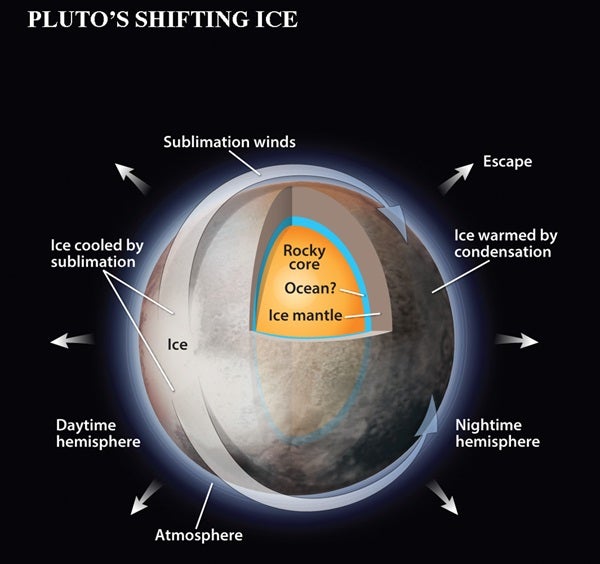You might wonder why the atmosphere is getting thicker now, as Pluto moves away from the Sun. It’s telling us that things are more complicated than just the heliocentric distance. Other factors come into play, like the exposure of the summer pole during Pluto’s extreme solstice, or maybe changes in albedo — the sunlight reflected off its surface.
So, yes, Pluto’s atmosphere changes a lot over its year, which lasts 248 Earth years. To understand how it changes, we hope to piece together thermal emission, albedo, radio occultations, and surface composition. Right now, we don’t know if it collapses down to something more like Io’s thin atmosphere, or if it “only” collapses down by a factor of 10 or so.
However, even if the entire atmosphere were to suddenly collapse during the time it takes to read this answer, it would only leave a dusting of nitrogen ice a little more than a millimeter thick. The atmosphere’s effect on Pluto’s surface is more as a conduit, allowing nitrogen ice to move from sunlit to less illuminated areas. This might well have something to do with some surface features, such as the bright, volatile-rich mid and northern latitudes, and the dark, volatile-poor equator.
New Horizons Co-Investigator
Southwest Research Institute
Boulder, Colorado










